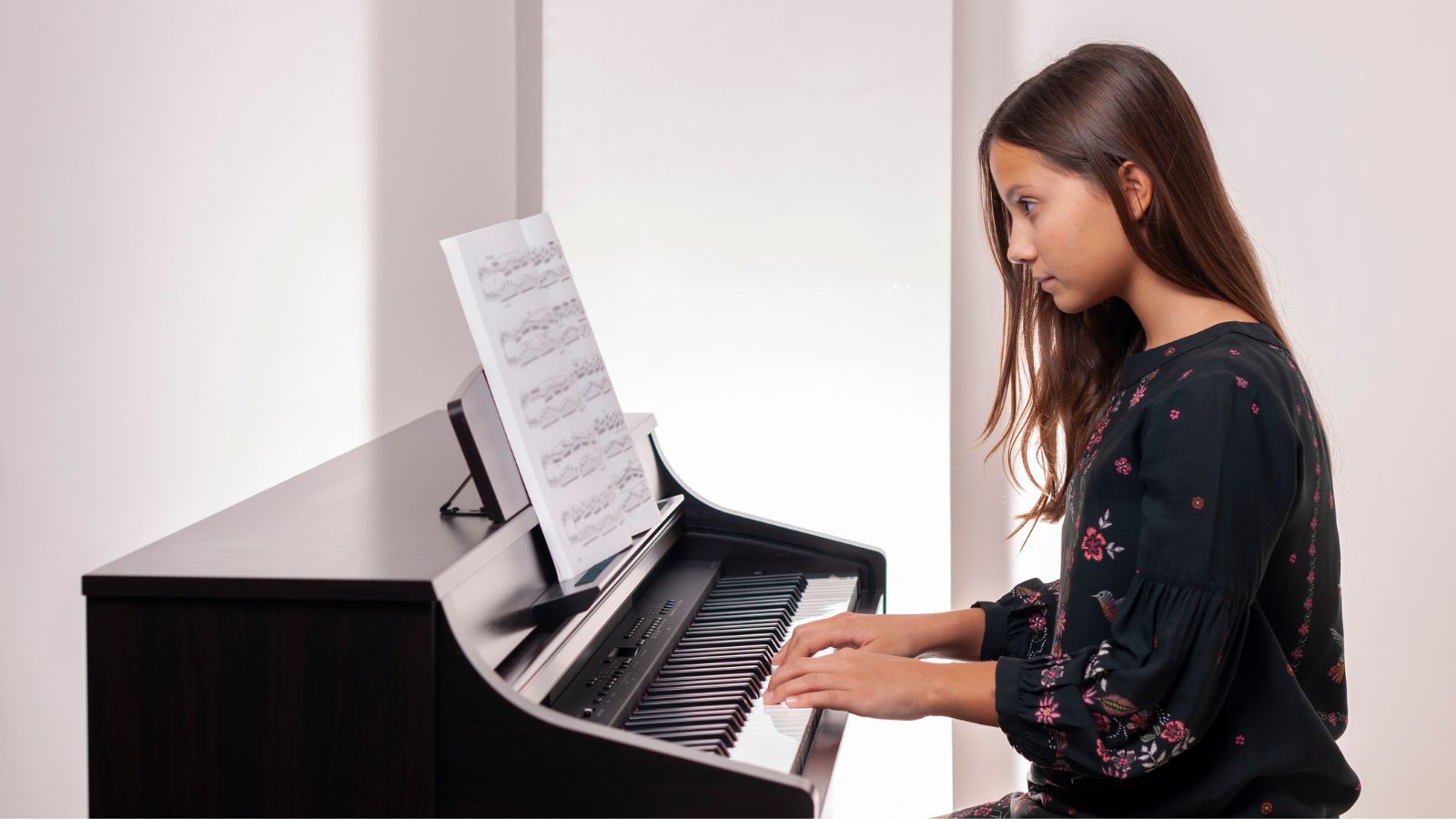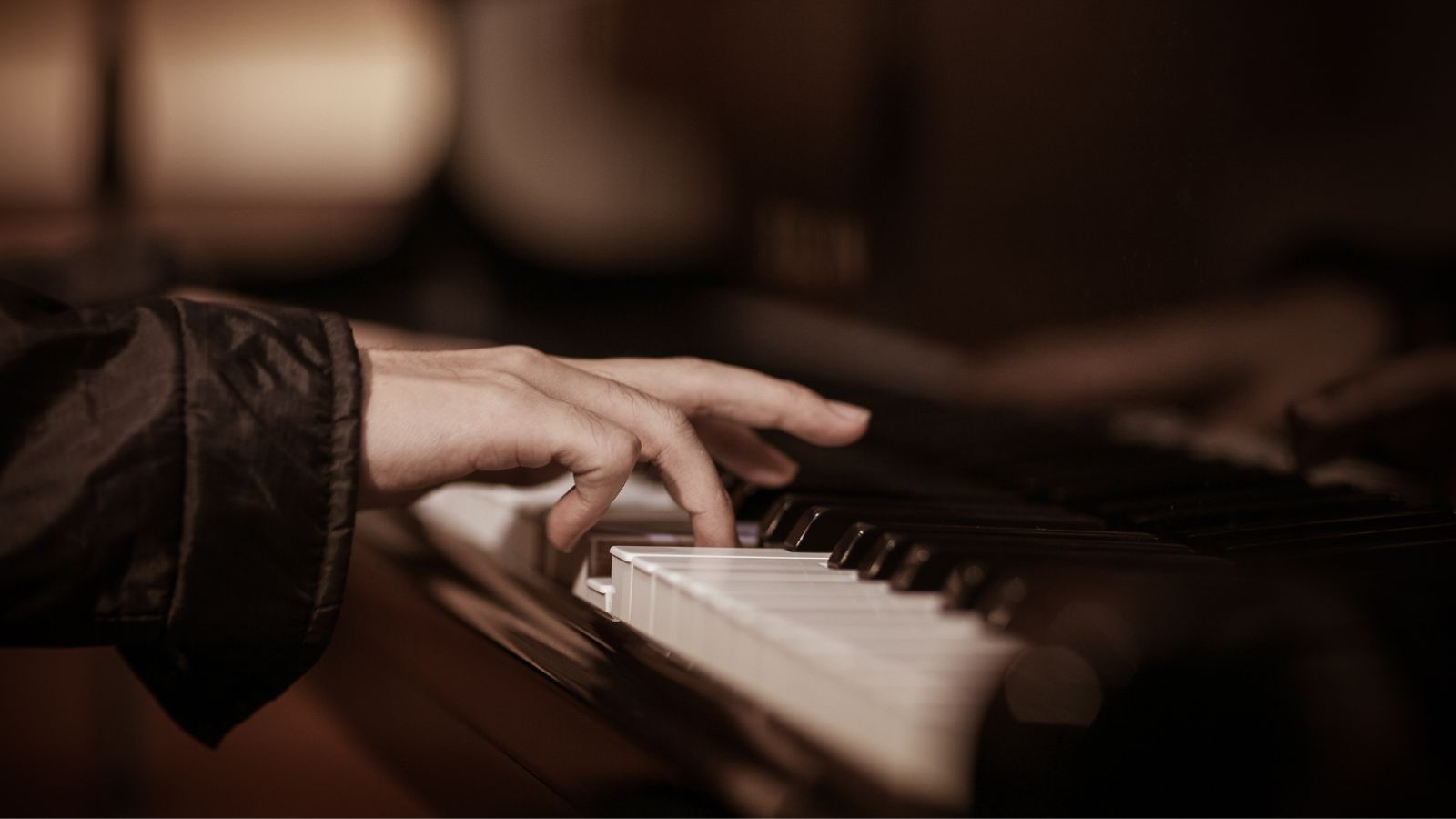Learning To Play The Piano Is One Of The Most Rewarding Experiences Because It Combines Creativity, Skill, And Emotion In A Way Few Other Activities Can. It Allows You To Express Yourself Through Music, Whether It’s Playing A Favorite Song, Composing Your Own Pieces, Or Simply Improvising. The Piano Is Also Incredibly Versatile, Giving You The Ability To Explore A Wide Range Of Genres, From Classical To Jazz To Pop. Beyond The Music Itself, Learning Piano Strengthens Your Focus, Improves Coordination, And Even Relieves Stress, Making It A Fulfilling Activity For Both The Mind And Soul.
Getting Started: The Basics Of Piano Playing
The basics of piano playing lay the foundation for everything you’ll achieve as a musician. It starts with understanding the piano itself, how the keys are arranged and how they produce sound. The white keys represent the natural notes (A-G), while the black keys are sharps and flats, grouped in patterns of twos and threes.
Learning proper finger placement and posture is essential to play comfortably and avoid strain.
From there, you’ll focus on reading sheet music, recognizing notes, and understanding rhythms.
Scales and chords are your building blocks, helping you develop muscle memory and a sense of harmony.
To become proficient, consistency is key. Practice daily, even if only for 15–30 minutes, to build your skills steadily.
Focus on one skill at a time, such as mastering scales or learning a new piece, and gradually increase the difficulty. Use a metronome to stay in rhythm and listen critically to your playing to improve accuracy.
Finally, remember that patience and persistence go hand in hand—progress comes step by step, and every practice session gets you closer to your goals.

Choosing The Right Piano Or Keyboard
Finding the right piano or keyboard is an important first step in your musical journey. Start by thinking about your space, budget, and goals. If you’re short on space, a portable keyboard or digital piano is a great option, they’re lightweight, compact, and often more affordable. If you have room and a bigger budget, an acoustic piano offers a classic sound and feel that many musicians love.
When shopping, visit a local music store if you can. Trying out different models in person helps you find one that feels comfortable to play. Look for features like touch-sensitive keys (so the sound changes based on how hard you press) and weighted keys, which mimic the feel of an acoustic piano. Online reviews and recommendations can also guide you, especially if you’re buying from trusted brands like Yamaha, Casio, or Roland.
Whatever you choose, make sure it suits your needs and inspires you to play, it’s not about having the fanciest instrument but the one that makes you excited to learn and grow.
Easy Steps To Begin Your Journey
Starting your piano journey is exciting, and breaking it into simple steps can make it feel less overwhelming. The first step in how to play piano is getting comfortable with the instrument. Understand the basics, like how the keys are arranged and how pressing them creates sound. Don’t rush to spend time experimenting with the keys to feel their weight and responsiveness.
Next, learn to use both hands separately before combining them. Start with exercises that focus on each hand individually, then slowly bring them together for basic melodies. It might feel tricky at first, but this step is key to building coordination.
Choose a few beginner songs that you love and practice them consistently. Familiar tunes make learning more fun and help you stay motivated. As you progress, try incorporating a metronome to keep a steady rhythm and ensure your timing improves.
Remember, it’s not about perfection right away, it’s about enjoying the process and making steady progress. Every small step you take brings you closer to becoming the piano player you want to be!

Effective Practice Techniques
Practice doesn’t have to be boring, it’s all about working smarter, not harder. Start with short, focused sessions of 20–30 minutes, where you tackle specific goals, like mastering a tricky chord or improving rhythm. Break songs into smaller sections and work on them piece by piece until they flow smoothly. Don’t forget to mix in some fun! Play a song you love at the end of each session to remind yourself why you started learning in the first place.
Staying Motivated: Overcoming Challenges
Hitting a plateau or struggling with a piece is completely normal, but staying motivated is key. Celebrate small wins, like nailing a section of a song or finally mastering a scale. When you feel stuck, switch things up, try a new genre, learn a fun duet, or play along with a favorite track. And remember, everyone makes mistakes. They’re part of the process, so laugh them off and keep going!
Exploring Advanced Techniques Over Time
Once the basics feel natural, it’s time to explore more advanced techniques that make piano playing truly exciting. Try learning arpeggios to add flair to your songs, experiment with dynamics to bring emotion to your playing, or dive into improvisation to create something unique. Advanced doesn’t have to mean intimidating, think of it as leveling up in a game, where each new skill unlocks something cooler than before. The more you learn, the more your music will come to life!
Final Thoughts: The Joy Of Playing Piano
Playing the piano is so much more than hitting the right keys; it’s about expressing yourself, connecting with music, and enjoying the journey every step of the way. Whether you’re playing a simple tune or a complex piece, each note you play is a reflection of your growth and creativity. The beauty of piano is that it’s always there for you, a source of relaxation, inspiration, and even a bit of fun on tough days.
No matter where you are on your musical journey, remember to enjoy the process. Celebrate the small victories, embrace the challenges, and let the joy of music keep you motivated. The piano isn’t just an instrument, it’s a lifelong companion that grows with you, and with each practice session, it brings you closer to creating something truly special.
